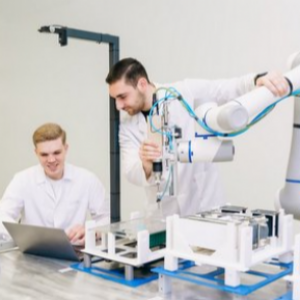Two years ago, Samara University became a participant in the flagship federal project of the Russian Ministry of Education and Science “Advanced Engineering Schools”. Its key idea is to combine science and manufacturing, and form the new engineering elite. Today, the Advanced Aerospace Engineering School (AAES) is a testing ground for creating technologies that just begin to be applied in the most advanced industries. Here specialists to be able both to develop such technologies and implement them at enterprises are trained. Able to invent and work with people. Able to be both creators and organizers.
The engineering elite is required
To be one of pioneers in developing the new model of engineering education, to undertake creation, no less, of the new engineering elite is a challenge not for everyone. Samara University accepted this challenge. It was followed by the competitive selection held at the Russian Ministry of Education and Science, where only 30 of 89 best universities in the country were selected for the project. And then the University formed, equipped and opened the Advanced Aerospace Engineering School (AAES).
Today, it is a rapidly developing scientific and educational unit of the University, which trains engineers of new formation. Specialists from three institutes of the engineering pool are directly involved in the School’s work: Institute of Aerospace Engineering, Institute of Engine and Power Plant Engineering and Institute of IT and Cybernetics. At AAES, 250 students study simultaneously in eight specially designed, original educational programs. Besides, over two years, more than a hundred engineers of aerospace regional enterprises have received additional professional education or improved their qualifications here.
Finally, right now, the first group of graduates of the AAES master’s degree is completing their final qualifying works, and in a few weeks, the newly minted masters will begin a new stage in their lives and careers. Some will start working at aerospace enterprises, while others will remain at their alma mater, enter the postgraduate school, and continue their scientific work.
They will be replaced by the most ambitious students graduating specialized bachelor’s degrees and the second-year graduates. They have the opportunity for choosing between a traditional educational track and a more complex AAES program. The School’s educational programs provide for two training options. The first one is designed for four years: bachelor’s and master’s degrees under the “2+2” scheme. The second one is designed for two years of master’s degree, and holders of bachelor’s degrees from other universities can also enroll in this AAES master’s program. But there is a peculiarity: the desire to study at the Advanced Aerospace Engineering School is not enough.
“We select students for the AAES on a competitive basis. The key criteria are the score gained while training under the basic educational program, the English-language knowledge level. And the main assessment is given by representatives of enterprises, which are the University’s industrial partners”, told us Vladimir Bogatyrev, Rector of Samara University. The selection is strict and, according to Ivan Tkachenko, this year it will become even more stringent. Indeed, for successfully mastering the AAES program, high-quality basic training and deep internal motivation to become a cool specialist are required. By the way, the AAES teachers and researchers also passed through the competitive selection. Though, is it possible to grow the engineering elite by applying other approaches?
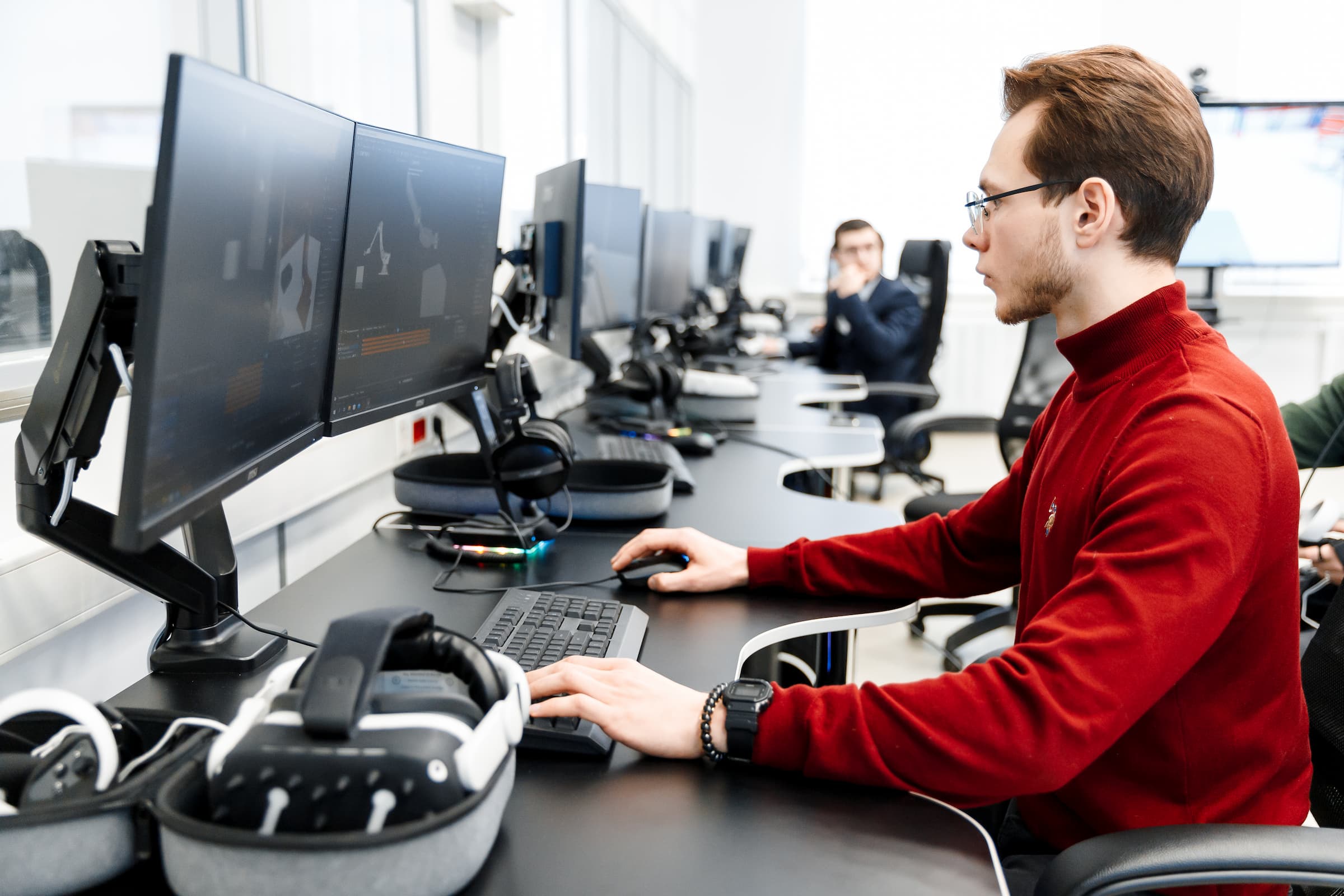
I’m entering the AAES!
In 2022, Daniil Iskvorin and Anastasia Kryukova passed the competition and got into the first group of the AAES master’s degree program. Today, two years later, Anastasia is graduating from the University in the field of “Aerospace-Engineering”, her program is “Innovation and Digitalization in Manufacturing Aircrafts”. Daniil is a specialist in propulsion engineering, his master’s program links engineering and informatics: “Artificial Intelligence and Big Data in Propulsion Engineering”. Why did they, having received their bachelor’s degrees, choose to enroll in the AAES master’s degree program, instead of the conventional engineering master’s degree?
“Now, in manufacturing aircrafts, innovative digital technologies are being introduced everywhere, implementing its automation and robotization. I liked that in the AAES, unlike the conventional master’s degree, there is the opportunity for studying all this and using it in my work”, explained Anastasia Kryukova.
During her study at the master’s degree program, the teachers interested the student in simulation modeling. This theme was not included in the curriculum at all, but the AAES has all the necessary environment for studying it, and Anastasia took advantage of this. For Daniil, the opportunity for mastering and applying digital technologies has also become a decisive argument in choosing the master’s degree.
“Having enrolled in the AAES master’s degree program, I developed the competencies to be gained in the bachelor’s degree of Institute of Engines and Power Plant Engineering, and in addition to them, I obtained new ones – those to be mastered by students of the Institute of IT and Cybernetics. There is no such program, which I studied at the AAES, in the IDEU conventional master’s degree program”, justified Daniil Iskvorin his choice.
Multidisciplinarity is one of the “highlights” of the AAES educational programs. Here, each student receives a number of related competencies, in particular, in the field of digital technologies. And some graduates of engineering bachelor’s degrees generally immerse themselves in IT, when learning in the master’s degree program.
“We have specifically allocated a number of places in IT programs and given them to students who have completed their bachelor’s degree not in IT specialties, but in engineering and mechanical engineering areas of training. And we saw great interest on their part”, explained Ivan Tkachenko, Deputy Rector, Director of the AAES.
A unique feature of Samara University’s AAES is that various competencies are combined within one educational program, as well as within specially formed multidisciplinary teams, where groups of students from five to seven people gather. In such a team, everyone, remaining in their usual areas, plays certain roles: design engineer, quality manager, IT engineer… And the teacher gives the student the opportunity for trying out each role, so that he could understand what he should specialize in.
From here, one step to the real personnel revolution, with employment at the enterprise of a ready multidisciplinary team grown in the AAES. According to Ivan Tkachenko, it remains to convince employers to accept such teams. This is the most difficult part. Though, everyone in the AAES is convinced that this will happen in the near future.
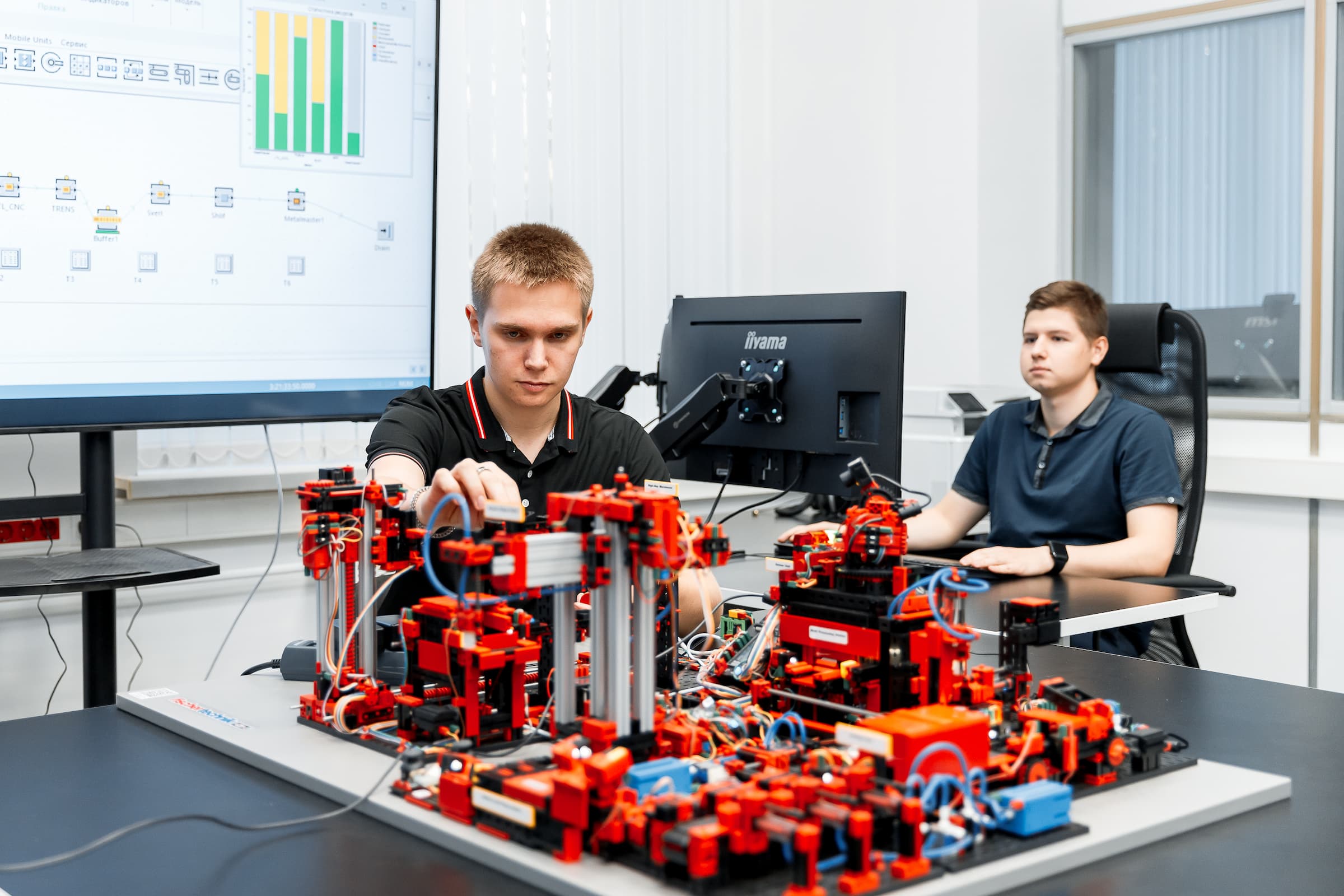
Education through research
The key features of the educational format of the Advanced Aerospace Engineering School are the closest link with production and involvement of students in scientific research. Living embodiment of the basic principle, on which education at Samara University is based, – “Education through research”
The research itself is conducted in interests of industrial partners, the key ones of which are SRC “Progress” JSC (part of Roscosmos), JSC “United Engine Corporation” (UEC, part of Rostec), its subsidiary PJSC “UEC - Kuznetsov”, as well as JSC “Aviakor – Aviation Plant”. They are directly involved in formation of educational programs, act as customers of R&D works. Herewith, the number of key industrial partners constantly increases: in 2022, there were two of them, in 2023, there were already four, and Rosatom currently shows serious interest in cooperation with the AAES.
Students’ deep immersion into both the industrial environment and science takes place right at the University’s campus. For this purpose, the AAES has created two cyber-physical factories: one for small spacecrafts for the Earth remote sensing, and another – for small-sized gas-turbine engines (GTE). At the first cyber-factory, the technology of large-scale robotic assembly of the radar-surveillance nanosatellite is being developed. Both the 12U cubesat itself and the technology are being created jointly with the private space company “STC” from St. Petersburg. The launch of the first device is scheduled for the end of 2024. This is a very interesting and important project for the country.
And at the second cyber-physical factory, they work on an intelligent production cell (IPC) for manufacturing small-sized GTE. Their development and testing are currently carried out at the University’s Engineering Centre. In other words, the University develops the engines themselves, their manufacturing technology, and the robotic production site. As Victoria Kokareva, Head of the laboratory of intelligent control systems at the AAES, explained, this IPCs can be used as “bricks” for assembling production units of any scale. This technology is the future of aerospace enterprises.
Daniil Iskvorin is one of the participants in the project on creating a cyberphysical factory of small-sized GTE. He was engaged in software adaptation. The project gave him invaluable experience of work in a team. Anastasia Kryukova also gained similar experience by participating in quality management projects and ones on developing drones. She even happened to be a mentor, sharing her knowledge of simulation modeling with undergraduate students of the AAES.
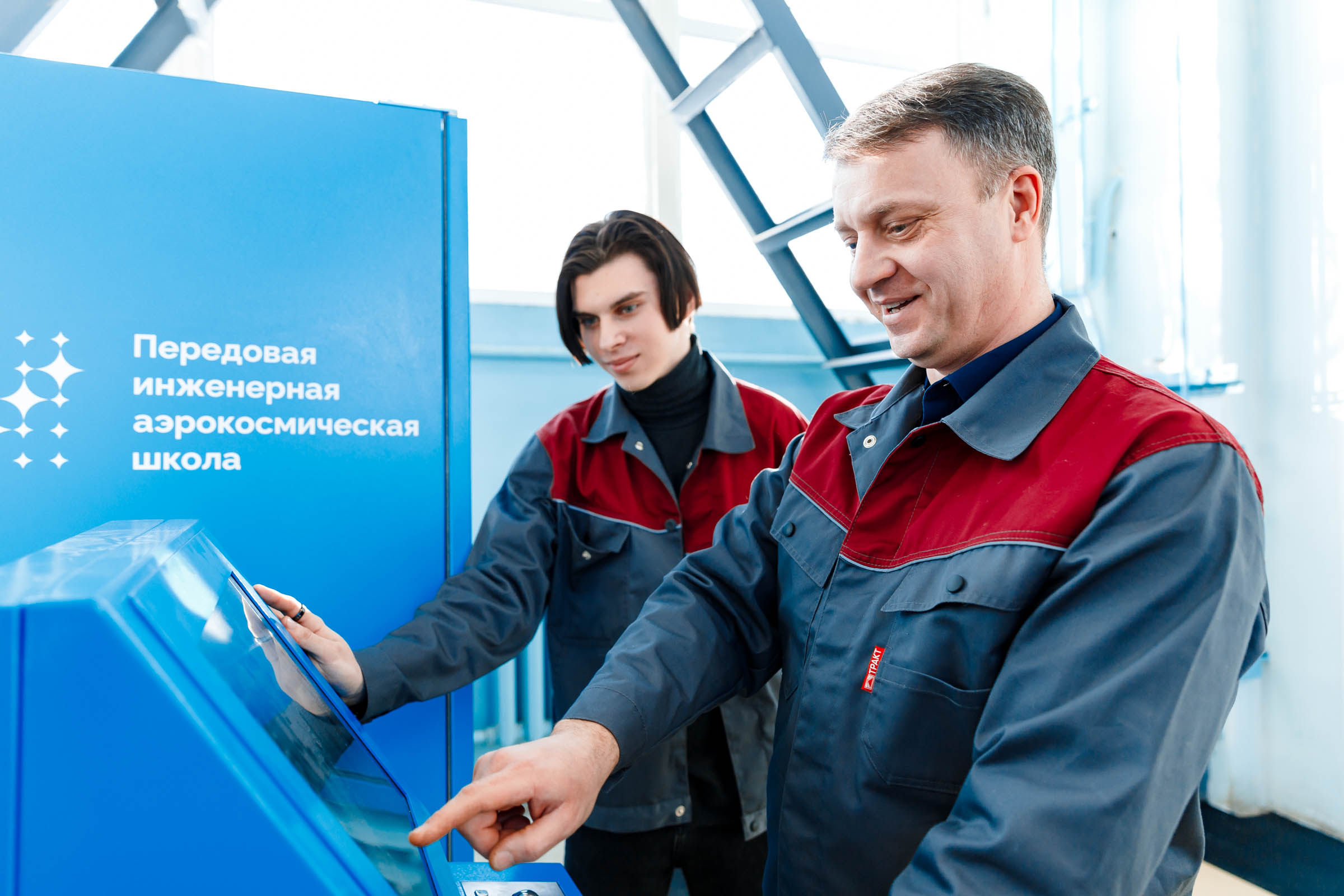
Everyone at the AAES studies
Development and implementation of the new model of engineering education, the most complex scientific research require constant development from the AAES teachers and researchers. For this purpose, internships are organized, retraining and advanced training programs have been launched, covering all employees of the School. One of these programs was implemented in the summer of 2023.
According to Ekaterina Savich, Deputy Director of the AAES, a group of teachers visited a number of leading enterprises in St. Petersburg, as well as St. Petersburg State Maritime Technical University and ITMO University.
The main value of such educational programs is in the experience exchange, in the study of best practices developed by colleagues. For example, Victoria Kokareva’s attention was attracted by the digital model of the shipyard developed at the Maritime University, a “shipbuilding” analogue of the digital factory model created at the AAES and implemented in cyber-physical factories.
ITMO University’s experience in organizing individual educational trajectories (IET) of students is especially valuable for Ekaterina Savich as the head responsible for development of curricula and programs at the AAES. IET is one of mainstreams of the modern education system, and industrial partners really need young specialists with broad outlook and a set of competencies, but at the same time adapted to specific production tasks. Such engineers are raised at Samara University’s Advanced Aerospace Engineering School.
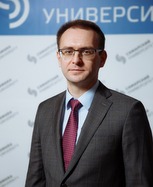 Vladimir Bogatyrev, Rector of Samara University:
Vladimir Bogatyrev, Rector of Samara University:
“We select students at the AAES on a competitive basis. The key criteria are the score gained while training under the basic educational program, the English-language knowledge level. And the main assessment is given by representatives of enterprises, which are the University’s industrial partners. They evaluate students, why this particular student should study at the advanced engineering school and why exactly in the area he has chosen, and what new and interesting things he can bring to this industry”.
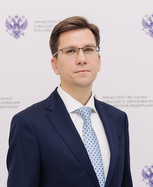 Ivan Tkachenko, Deputy Rector of Samara University, Director of the AAES:
Ivan Tkachenko, Deputy Rector of Samara University, Director of the AAES:
“Our main achievement is developing the conceptual model of a digital plant, on the basis of which a digital aircraft design factory and two cyber-physical factories were created – one for small spacecrafts, and another for small-sized gas-turbine engines. These are scientific and educational testing grounds where the AAES students participate in developing robotics technologies, which are then transferred to industrial partners”.
Source: firstsamara.ru
 RU
RU  EN
EN  CN
CN  ES
ES 